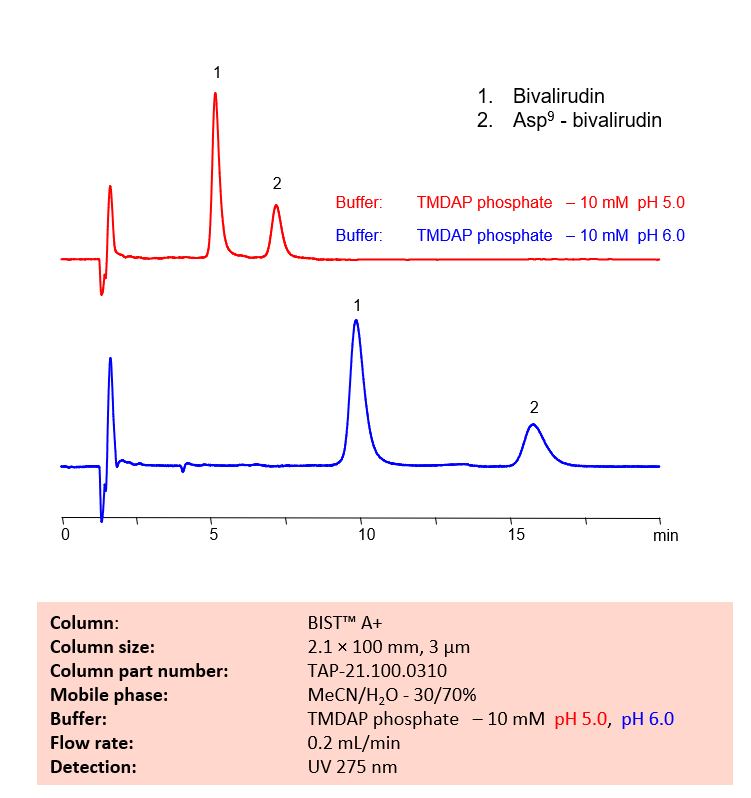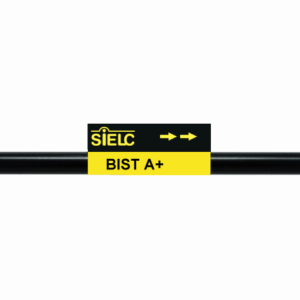HPLC Method for Bivalirudin on BIST A+ by SIELC Technologies

Bivalirudin is a short, 21-amino-acid peptide with the chemical formula C98H138N24O33. It has 2 basic and 6 acidic groups. It is sold as a direct thrombin inhibitor (DTI), which is used as an anticoagulant.
Asp9-bivalirudin is a process impurity and can be a result of the degradation of the drug bivalirudin. It has the chemical formula C98H137N23O34.
SIELC’s new BIST™ mode can retain and separate Bivalirudin and its degradant with a TMDAP phosphate buffer, and the respective retention times can be controlled by altering the pH of the buffer.
Condition
| Column | BIST A+, 2.1 x 100 mm, 3 µm, 100 A, dual ended |
| Mobile Phase | MeCN – 30% |
| Buffer | TMDAP phosphate – 5 mM pH 5.0, pH 6.0 |
| Flow Rate | 0.2 mL/min |
| Detection | UV 275 nm |
Description
| Class of Compounds | Drugs, Anticoagulant |
| Analyzing Compounds | Bivalirudin |
Application Column
BIST A+
Column Diameter: 2.1 mm
Column Length: 100 mm
Particle Size: 3 µm
Pore Size: 100 A
Column options: dual ended





